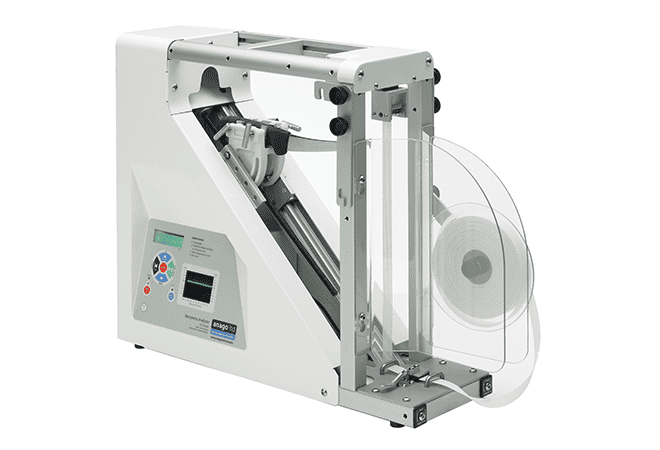Introduction
This article looks at how knife sharpening is traditionally managed in the meat industry and some problems with these methods. It then goes on to explain how the introduction of the Anago knife sharpness tester is changing how we manage our sharpening processes and is fast becoming the global industry standard. We then review the benefits and importance of both testing sharpness and having suitably sharpened knives for Traditional Religious Slaughter and general meat processing.
Current situation
Developing the skills to effectively sharpen and maintain a knife is not easy. Traditionally this has been a skill that’s passed down from trainers, experienced knife operators and sharpeners to those new to the trade. Confirmation of their ability to sharpen a knife and testing that sharpness is done using largely subjective methods (i.e. paper cut test, cutting hair off your arm). After initial basic training staff are usually left to manage sharpening themselves.
With these traditional training and testing methods it can be hard to tell if training has really been effective and if the butchers are truly doing a good job sharpening and maintaining their knives. Over time they may naturally make some improvements but this can be a slow process taking years or even decades, and given the high rates of staff turnover in todays meat processing industry, building a solid program around knife sharpening is key to having a happy, healthy, and productive workforce.
Measuring knife sharpness
The objective feedback provided by the Anago knife sharpness tester includes a score out of 10 for each knife and a profile of sharpness from the tip to the heel of the blade. This allows knife sharpening staff, trainers, and students to fine tune their sharpening techniques by using the results from each sharpness test to prompt changes and improvements. The result is a continuous improvement in both sharpening methods and sharpness levels.
It has proven to be a very effective way for creating dramatic improvements to knife sharpness levels. Many customers more than double their sharpness levels (halve the required cutting force) without having to change existing sharpening equipment and staff. They simply add a feedback loop into their sharpening processes.

The benefits of sharpness measurement and sharper knives
Traditional Religious Slaughter
- A sharp knife is more humane – Cleaner faster cuts with less drag result in the animal becoming insensible faster & with less pain.
- Adheres to the standard – The standard has been put in place for an “extremely sharp” knife to slaughter the animal, therefore it needs to be such. Measurement equipment will allow an objective benchmark level to be set.
- Effective training – Using the Anago KST ensures that the most effective sharpening techniques are being taught and the quantifiable results eliminate any perception of subjectivity.
- Identify nicks in the blade – A properly sharpened knife should not have any nicks. The Anago knife sharpness tester clearly identifies nicks and dull points along the entire blade with multiple measurements taken. This allows for knives that have nicks to be treated to remove them, and checked to confirm removal.
Other General meat processing benefits
- Testing sharpness leads to sharper knives
- A sharp knife is more productive – Up to 1.5 times faster cutting speed
- A sharp lowers strain on the slaughterman – Sharper knives can bring about a huge reduction of MSDs/Overuse injuries
- Effective training – Using the Anago KST ensures that the most effective sharpening techniques are being taught and the quantifiable results eliminate any perception of subjectivity.
Click here to read an article released by The National Provisioner on how technology is being used to answer various slaughtering challenges. As part of this article Joe Regenstien, a professor of food science and head of the kosher and halal food initiative at Cornell University, discusses religious slaughter with regards to the strict knife sharpness standards and its impact on animal welfare during the slaughtering process. He talks the ability to objectively measure knife sharpness with technology such as the Anago knife sharpness tester as a way to adhere to and maintain these strict standards of sharpness.





